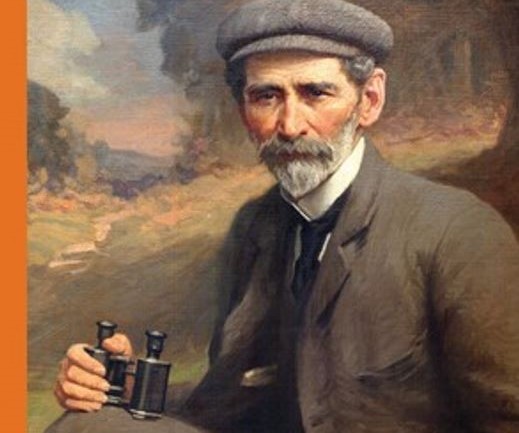The author who made people fall in love with nature: Who is William Henry Hudson?
His early romances, set in South America, are weak in character descriptions but are full of musings on the power of nature. These novels, to which he owes his reputation today, did not attract much attention when they were first published.

William Henry Hudson; (born August 4, 1841, near Buenos Aires, Argentina – died August 18, 1922, London, England) was an English writer, naturalist, and ornithologist. He is known for his exotic romances, notably Green Mansions (1904).
He was the son of a New England family who bred sheep in Argentina. He spent his childhood, which he fondly remembers in Far Away and Long Ago (1918), wandering freely on the pampas, studying the life of plants and animals, and observing nature and people. When an illness at the age of fifteen permanently deteriorated his health, he shut himself up and devoted himself to work. Darwin's Origin of Species made a deep impression on him, as it confirmed his own observations of nature. After the death of his parents, he began to travel constantly. Little is known of this period and of his early years in England, where he settled in 1869. He married a much older woman in 1876, probably due to his poverty and illness. He started a comfortable life when his wife inherited a house in the Bayswater part of London. He became British in 1900.
William Henry Hudson (4 August 1841 – 18 August 1922) – known in Argentina as Guillermo Enrique Hudson – was an Anglo-Argentine author, naturalist and ornithologist.
His early romances, set in South America, are weak in character descriptions but are full of musings on the power of nature. These novels, to which he owes his reputation today, did not attract much attention when they were first published. His first novel, The Purple Land That England Lost (1885, 2 volumes), was followed by several long stories, which he collected in 1902 in the book El Ombu. His latest romance, Green Mansions, tells the strange love story of Rima, a mysterious creature of the forest, half bird, half human. His best-known character, Rima, was also the subject of a statue made by Jacob Epstein and placed in the bird sanctuary in London's Hyde Park in 1925 in memory of Hudson.
His romances earned Hudson the friendship of many English writers, including Joseph Conrad, Ford Madox Ford, Edward Garnett, and George Gissing. Books on birds, such as Argentine Ornithology (1888-89) and British Birds (1895), helped the statesman Sir Edward Gray put him on a salary in 1901. His books on English country life such as Afoot in England (1909), A Shepherd's Life (1910), Dead Man's Plack (1920), A Traveler in Little Things (1921), and A Hind in Richmond Park (1922) reached a wide readership. Although these books, which convey the feelings of an artist who is passionate about nature in all its aspects, with detailed and dreamy descriptions, contributed greatly to the "return to nature" movement of the 1920s and 1930s, they became less readable over time.
